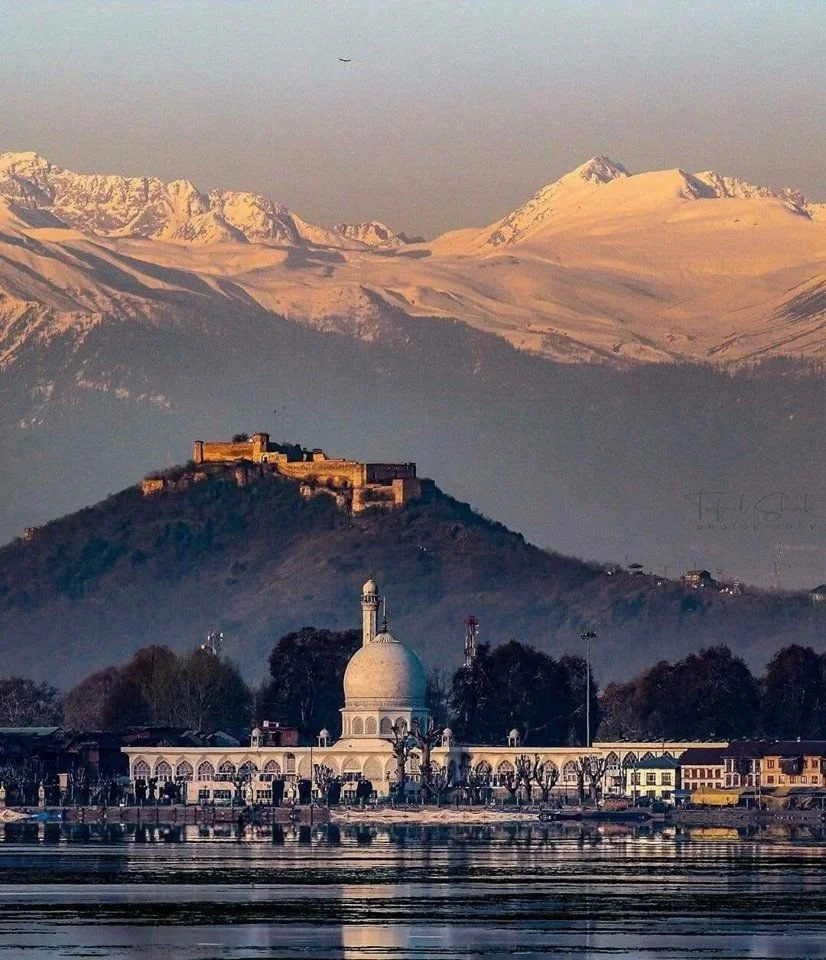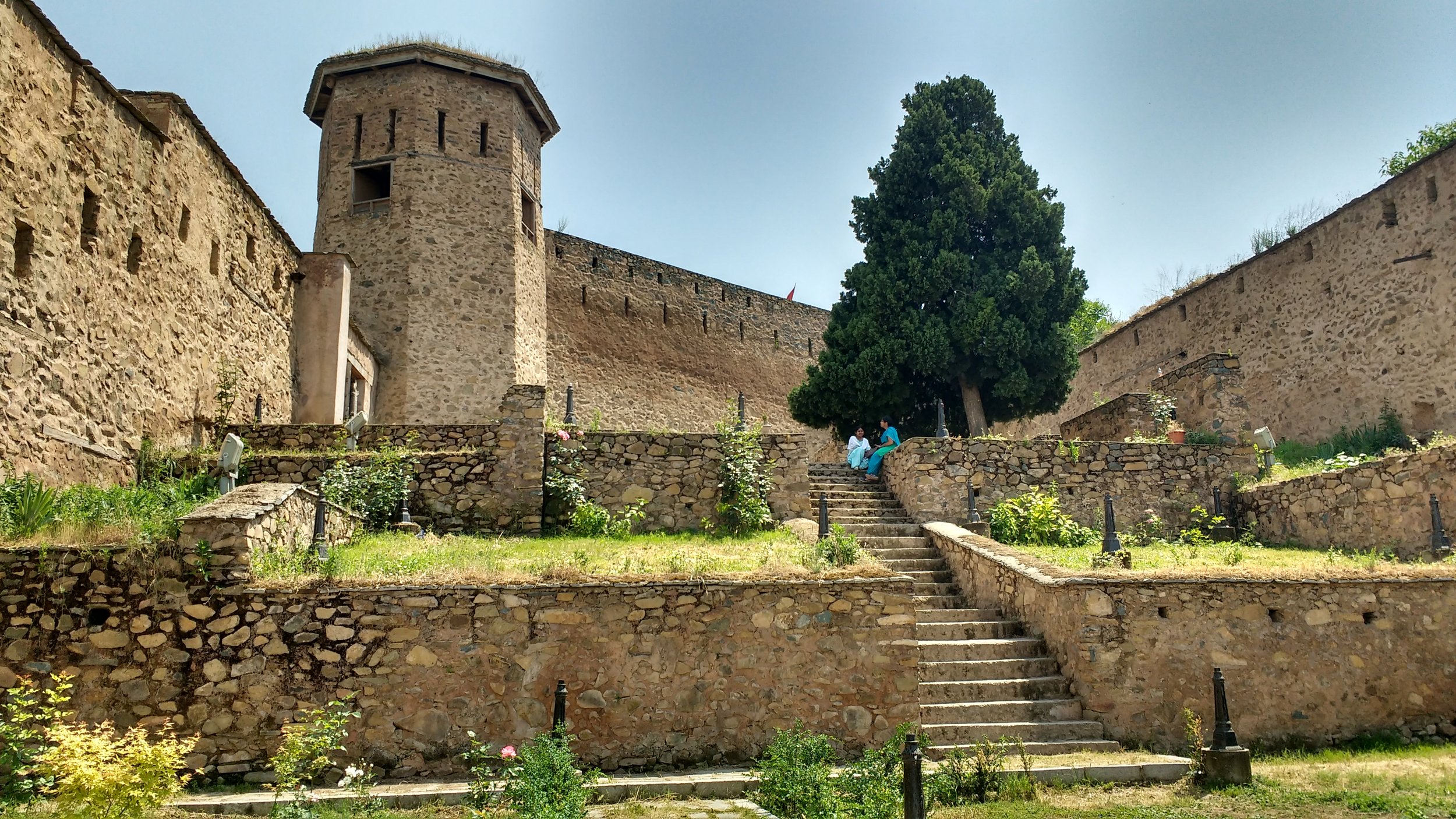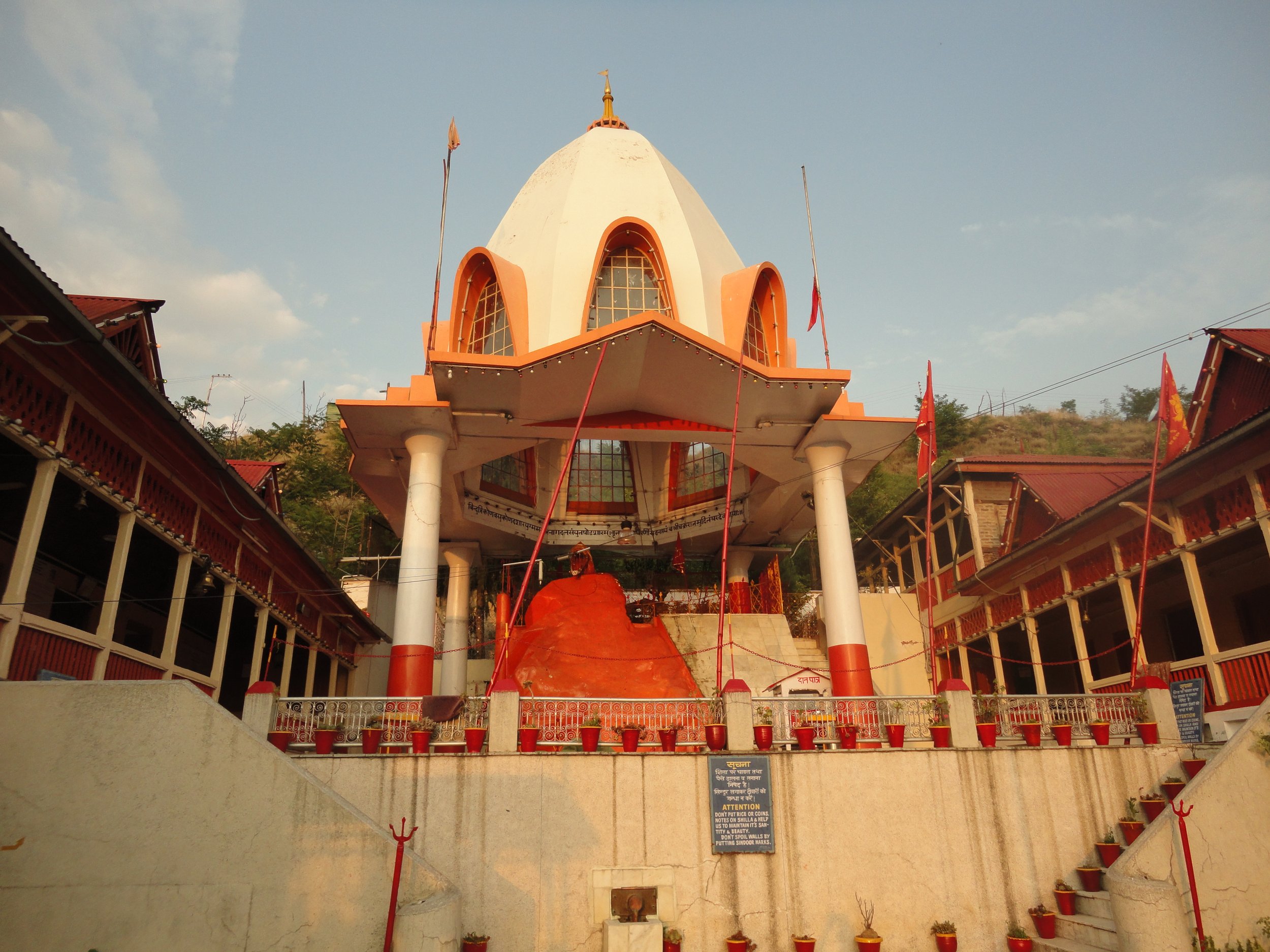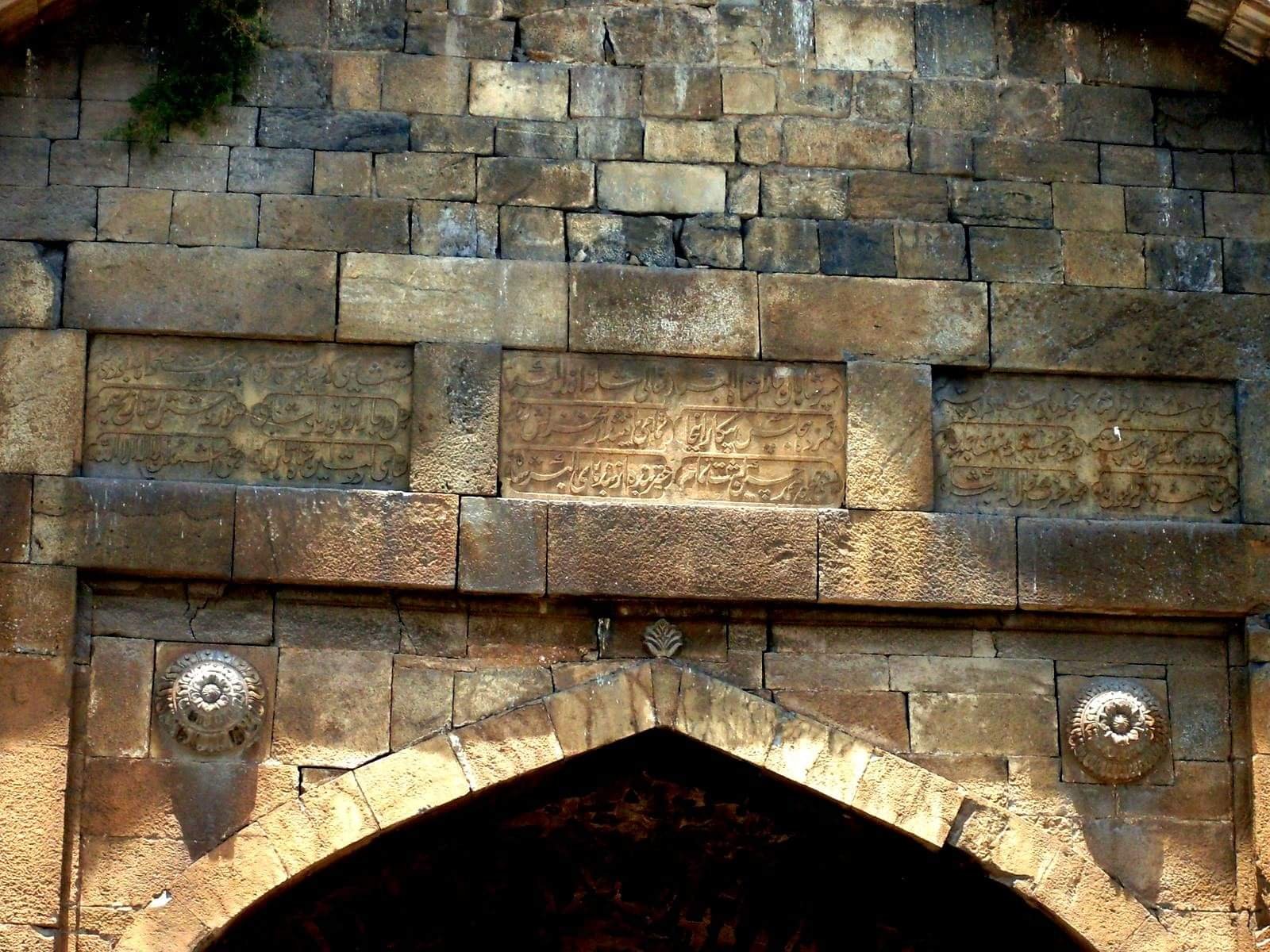Hari Parbat
Hari Parbat is a hill in Srinagar. It is also known as Koh-e-Maraan and is considered a sacred site by Hindus, Muslims, and Sikhs.
Hari Parbat fort with Hazratbal shrine in front and Pir Panjal in backdrop
The history of Hari Parbat dates back to ancient times. The earliest historical reference is found in the Rajatarangini, a historical chronicle of the kings of Kashmir, written by the 12th-century historian Kalhana. The Rajatarangini refers to the hill as "Koh-e-Maran" or the "Hill of the Peacock”. The hill is a part of the famous Zabarwan Mountain range and is considered a sacred place by Hindus, Muslims, and Sikhs alike.
At the summit of the hill stands the Hari Parbat Fort, which was built during the reign of the Mughal Emperor Akbar in the 16th century. The fort has undergone several renovations and expansions over the centuries and is now maintained by the Indian Army. The present fort was built in 1808 under the reign of the Afghan Governor of Durrani Empire, Atta Mohammed Khan.
View inside the fort
On the southern side of the hill, there is the Sharika Devi Temple, a Hindu temple dedicated to the goddess Sharika. The temple is believed to be one of the 18 Maha Shakti Peethas, and it attracts a large number of devotees, especially during the annual Sharika Jayanti festival. Devout hindus celebrate the Ashada Naumi festival here in summer.
Sharika temple
On the western slope of the hill, there is the Makhdoom Sahib Shrine, a revered Muslim shrine that attracts devotees from all over the world. The shrine is dedicated to the 16th-century Sufi saint Makhdoom Sahib and is believed to possess miraculous powers.
Makhdoom Sahib Shrine
Persian Inscriptions
Hari Parbat is also home to several other important historical and cultural landmarks, including the Kathi Darwaza, a beautiful Mughal-era gateway; the Shah Hamdan Mosque, a beautiful wooden mosque built in the 14th century; and the Akhund Mullah Shah Mosque, a beautiful mosque built in the 17th century.
There are several inscriptions in Persian in the fort. The inscription at Kathi Darwaza states the following:
'this killah of Nag-i-Nagur is built by the order of the great king, Akber, at the expense of one crore and ten lakhs of rupees from Hindustan, that two hundred master builders were employed and that no injustice was done to anyone who assisted them, but that all were paid – that there never was a king like this king of kings, nor ever will be – that it was built in the year of the Hejira, 1006 (A.D 1597) and that the Superintendent's name was Khoja Mohamed Husyn, a slave of Akber's'.
Kathi Darwaza
The Persian inscription at the Makhdoom Sahib Shrine is believed to date back to the 18th century and is written in the Nastaliq script. It is carved on a marble slab and is located above the entrance to the main shrine. The inscription is a tribute to Makhdoom Sahib and contains verses in praise of the saint.
The translation of the Persian inscription is as follows:
This is the shrine of Makhdoom Sahib, the king of the saints
Who is a friend of God and a refuge for the poor and the needy.
He is the one who shows the way to the path of truth and righteousness,
And who leads his followers to the paradise of eternal bliss.
In addition to its historical and cultural significance, Hari Parbat offers stunning views of the surrounding mountains and the Dal Lake, making it a popular tourist destination.







